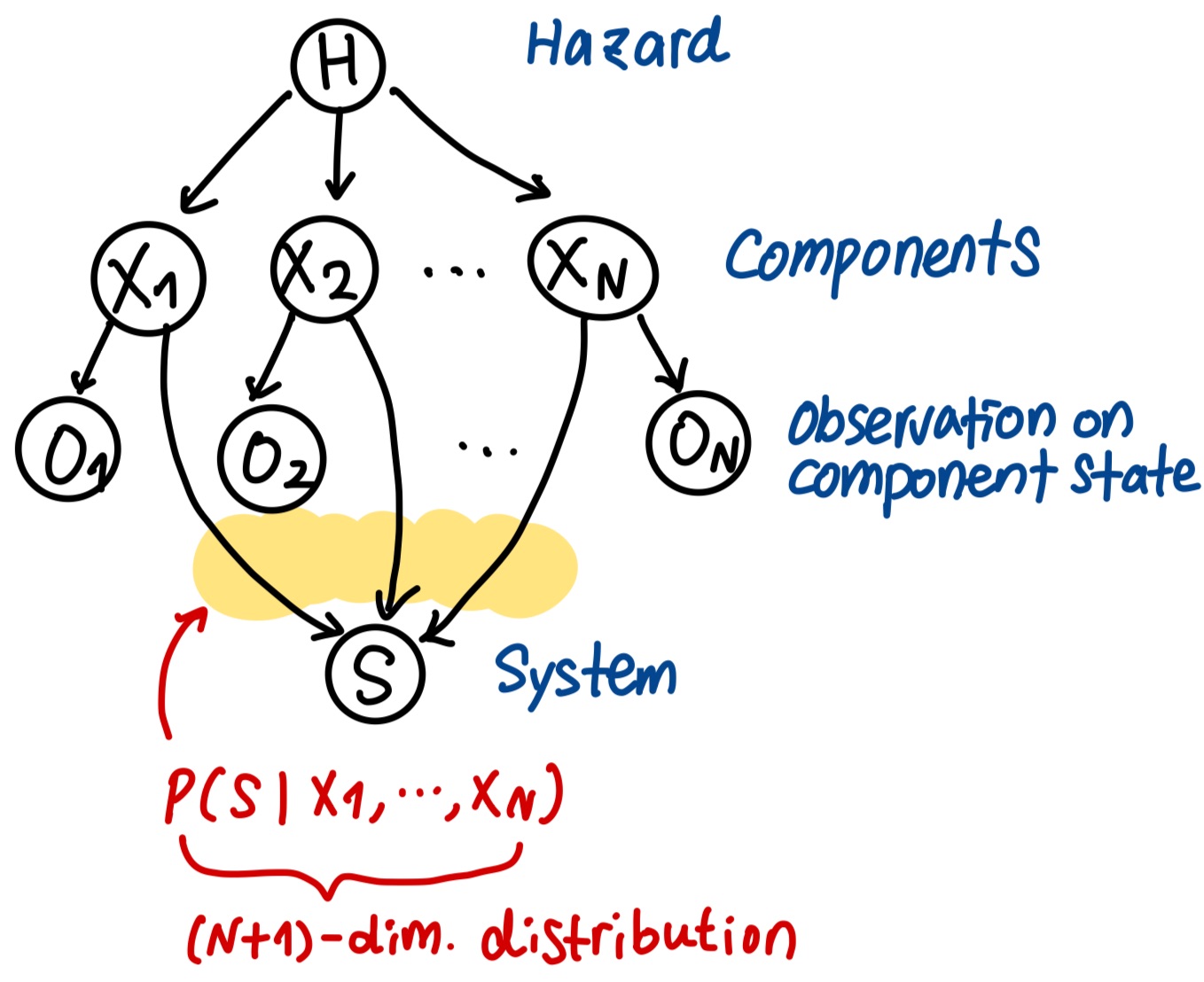MBNpy
A Python toolkit for risk assessment in high-dimensional systems
MBNpy is a Python implementation of the Matrix-based Bayesian Network (MBN) — a scalable Bayesian network (BN) framework designed to handle complex, high-dimensional system events.
It focuses on discrete-state component events, which present distinct characteristics compared to continuous-state models.
MBNpy enables the construction of interpretable and updatable BN models, even in systems with a large number of components. Its core functionalities include:
Bayesian network
BN is a probabilistic graphical model that visualises statistical dependencies between variables. A typical BN graph for a system event is as follows:
- a complex joint probability distribution can be readily quantified by being broken down to local distributions between directly connected components; and
- new information can be systematically incorporated to update an entire model through observation nodes.
When a system has 50 binary-state components, there are more than $10^{15}$ possible state combinations; if a combination can be analysed for 0.001 seconds, it takes 35,702 years to complete computation.
MBN vs. BN
MBN solves the challenge by two approahces:Citation
For general use of MBNPy, Byun and Song (2021) can be cited. For other specific uses, a summary of developments and publications are available at Publications.
Recent posts
- Tutorial on using the BRC algorithm- September 15, 2024
- Getting started- August 25, 2024
- Expected days of power cut- July 20, 2024
- MBNPy's system catalogue- July 20, 2024
Developers
- Ji-Eun Byun, PhD, University of Glasgow, United Kingdom
- Hyeuk Ryu, PhD, Geoscience Australia, Australia